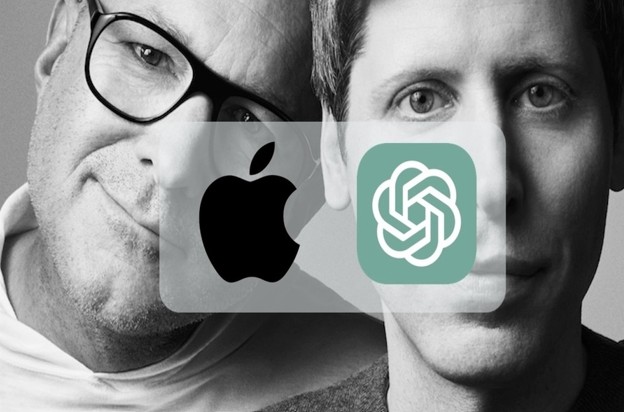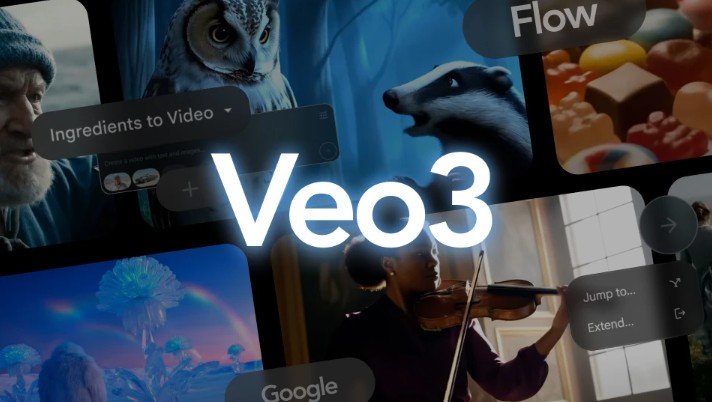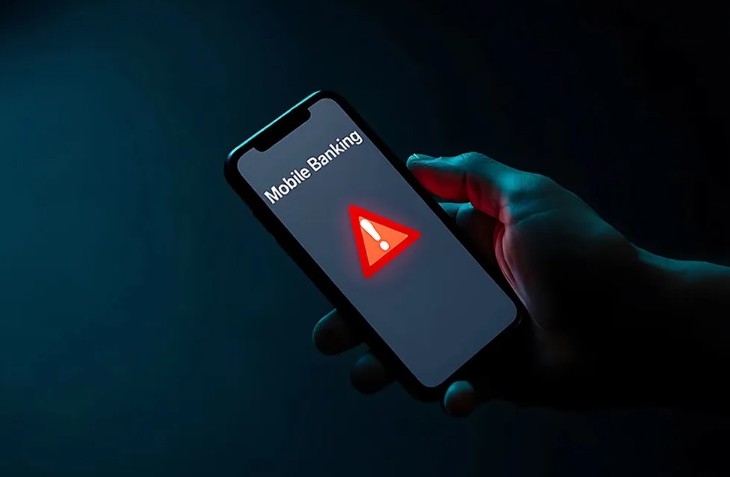Best Selling Products
Shocking Leak: OpenAI Joins Hands With Jony Ive To Create Mysterious AI Device
Nội dung
- 1. Shocking deal: OpenAI buys Jony Ive's io for $6.5 billion
- 2. Legal Trouble: Trademark Dispute Between io and iyO
- 3. iyO Product: The World's First Audio Computer
- 4. io response: AI devices are not headphones, not wearables
- 5. What is an AI device? The “third core” besides iPhone and MacBook
- 6. Not a wearable device, predicted to be manufactured in Vietnam
- 7. “Super AI” devices are the next step in the technological revolution
Amid all the attention focused on the future of artificial intelligence hardware, a lawsuit over the "io" trademark has unexpectedly revealed important details about a new AI device that OpenAI and Jony Ive's team are developing - a device that is expected to reshape the way we interact with AI technology in our daily lives.

In the tech world, groundbreaking innovations are often kept under wraps until they’re officially released. But companies don’t always have control over the information—especially when legal disputes arise. That’s exactly what happened with OpenAI and legendary designer Jony Ive, the man behind iconic Apple devices like the iPhone, iPad, and MacBook.
Amid all the attention focused on the future of artificial intelligence hardware, a lawsuit over the "io" trademark has unexpectedly revealed important details about a new AI device that OpenAI and Jony Ive's team are developing - a device that is expected to reshape the way we interact with AI technology in our daily lives.
From the announcement of a $6.5 billion deal to a legal dispute with Google-backed iyO, what’s happening is more than just a name war, it’s a sign that a fierce race in AI hardware is quietly starting. And this time, it’s not about software, but about a real, physical device designed to be the “third core device,” alongside smartphones and laptops.
So what is this mysterious AI device? Why did OpenAI partner with Jony Ive? And is the trademark dispute just the tip of the iceberg? Join SaDesign as we explore the legal and technological fallout to better understand what could be a new turning point in the AI era.
1. Shocking deal: OpenAI buys Jony Ive's io for $6.5 billion
On May 22, 2025, OpenAI officially announced the acquisition of io, founded by Jony Ive and Tang Tan – two former Apple veterans. This deal, valued at up to 6.5 billion USD, is not only a financial event but also a signal of OpenAI's clear ambition: to expand into the high-end hardware field.
.jpg)
In the official announcement, OpenAI describes io as a "collection of the best hardware and software engineers", with the goal of creating groundbreaking AI products, deeply connecting software and hardware, something Jony Ive did extremely successfully while at Apple, with iconic products such as the iPhone, iMac, iPad.
OpenAI's collaboration with a legendary designer like Ive shows that the company is not just about chatbots like ChatGPT, but also reshaping the future of the interface between humans and artificial intelligence.
2. Legal Trouble: Trademark Dispute Between io and iyO
But with big ambitions comes big risks. Just days after the deal, a court order forced OpenAI to remove all references to io from its official website. The reason was that Google-backed iyO filed a lawsuit against OpenAI and io, alleging trademark infringement.
iyO believes that the name "io" is too close to "iyO", causing confusion and affecting their business, especially when both companies are operating in the hardware and AI fields.
Notably, iyO filed several internal emails in its lawsuit, including information that io and OpenAI executives were well aware of iyO's products and even asked to see a demo of their devices. This makes the "intentional infringement" claim all the more serious.
3. iyO Product: The World's First Audio Computer
.png)
To better understand the context of the dispute, it is important to understand who iyO is. The company is developing a particularly groundbreaking product: the world’s first sonic computer, a device that can understand, respond to, and interact with its users entirely through sound.
The device has no screen, no keyboard. It acts as a mini AI assistant that attaches to your ear or collar, using omnidirectional microphones, AI natural language processing, and a speaker that responds in real time.
This is a completely new model, going against the tradition of smartphones and PCs and is considered an evolutionary step in human-machine interface, surpassing even Siri or Google Assistant.
The fact that OpenAI allegedly got access to a demo of the iyO device, then collaborated with a hardware design team to create a product that may have duplicated the idea, makes the case even more complicated.
4. io response: AI devices are not headphones, not wearables
Shortly after being sued, Tang Tan, co-founder of io and former director of hardware design at Apple, filed a response to the lawsuit, in which he admitted that the team was “marketing,” meaning they were researching many existing devices, including headphones, hearing aids, and more than 30 models from various companies.
.png)
However, he stressed that io's product is neither a headset nor a wearable device. This is to refute the accusation of "copying iyO's product".
He also revealed an important detail: OpenAI + io’s AI product will be a kind of “third core device,” one that can be placed in a pocket or on a desk, alongside an iPhone or MacBook Pro. It will act as a standalone physical AI assistant, not replacing the phone, but expanding the possibilities for natural communication between humans and AI.
5. What is an AI device? The “third core” besides iPhone and MacBook
The concept of a “third core device” is an ambitious and strategic phrase. In the current ecosystem, the two central devices are the smartphone and the laptop (or tablet). The new AI device that OpenAI and Jony Ive are developing will act as a new interface node – dedicated to AI.
It is not a phone replacement, but a bridge between humans and advanced AI systems, allowing users to:
Interact with voice or gestures, hands-free
Summarize and filter information from messages, emails, calendars
Perform complex requests like booking tickets, scheduling, and finding in-depth information
Instantly connect to powerful AI models like ChatGPT, DALL·E or Codex
This device, if successful, will create a completely new product line – where AI is no longer "hidden" software in the machine, but becomes a physical entity, as close as a technological friend in your pocket.
.png)
6. Not a wearable device, predicted to be manufactured in Vietnam
Contrary to Tang Tan's claim, renowned analyst Ming-Chi Kuo, who has a track record of accurately predicting Apple products over the years, said that the AI device developed by OpenAI could be worn as a necklace.
In his prediction in late May 2025, he said:
"The AI device that Jony Ive is working on with OpenAI is expected to be mass produced in 2027. It will be assembled in Vietnam."
Manufacturing in Vietnam also fits into the trend of shifting global supply chains away from China, where labor costs are rising and political barriers are becoming more apparent.
Ming-Chi Kuo believes the product will be focused on seamlessness, personalization, and privacy, designed to support every aspect of modern life – from work and learning to entertainment and mental health.
7. “Super AI” devices are the next step in the technological revolution
It is no coincidence that Jony Ive, who designed the design language for the iPhone, iPad, and Apple Watch, chose to return to the technology playground with OpenAI - the company leading the wave of artificial intelligence.
.png)
In an interview last year, Ive shared:
“Software has done a lot of great things, but now we need a product that can bring AI closer to users, in a natural, safe, and human way.”
He calls it a “super AI” device that will change the way we interact with information, communicate, and make decisions. Instead of opening an app and typing a question, you just talk and AI will understand, respond, and act on your behalf.
If the device is successful, it will not only redefine the AI hardware market, but could also be the “iPhone of the AI era.”
The OpenAI/io vs. iyO lawsuit is more than just a name dispute. It’s a sign that a whole new technology race is beginning—the race for AI hardware.
In the not-too-distant future, instead of just using chatbots in the browser, we could carry a "personal AI assistant" with us, understanding us like a friend, supporting us like a secretary, and processing requests like a supercomputer.
While Jony Ive and OpenAI’s AI product won’t be available until 2026–2027, its existence is already generating a wave of interest and debate in the tech world. And as it has so often done before, Jony Ive—the man who changed the way we use computers and phones—may once again be rewriting the future.












































